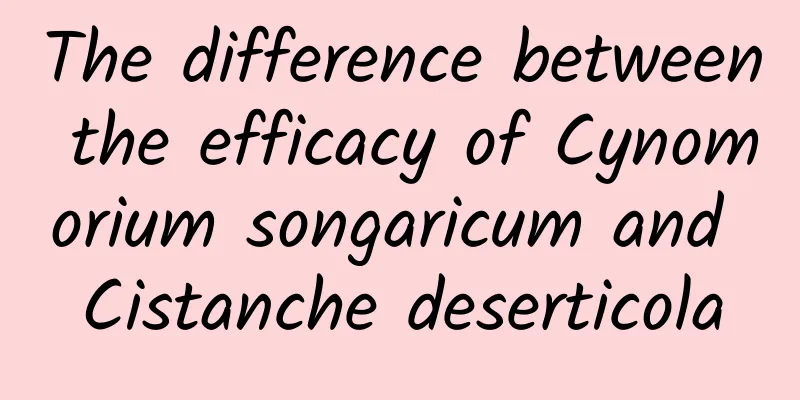The efficacy and function of Xinshen

|
Xin ginseng is something that many people are very familiar with. The benefits that Xin ginseng brings to us are not available in other foods. So what are the effects of Xinshen? Let’s learn about it together. [Other names] Wild licorice, white ginseng, western ginseng, mountain licorice, white ginseng, white ginseng [Source] Medicinal material source: The tuberous root of Gentiana macrophylla of the Lamiaceae family. [Original form] Pseudo-Qinjiao, perennial herb, 30-80cm tall. The rhizomes are fat and connected in lumps. The stem is erect, quadrangular, unbranched, and densely covered with stellate, coarse hairs. The petiole of the basal leaf is 3-15cm long; the leaf blade is narrowly ovate, ovate-lanceolate, triangular or ovate, 7.5-14cm long, 5-10cm wide, with crenate or tooth-like margins; the stem leaves are opposite, with petioles 0.3-3cm long; ovate to lanceolate, 5-9cm long, 2-4.5cm wide, with crenate or tooth-like margins; both sides of each leaf blade are covered with particularly long star-shaped rough hairs or simple hairs on the middle branches. The inflorescence of the cyme is densely packed with many flowers; the bracts are sessile; the bracts are spiny, dark purple, with internode hairs, and nearly as long as the calyx; the calyx is tubular-bell-shaped, about 10mm long, with internode hairs and fine hairs, and nearly as long as the calyx; the calyx is tubular-bell-shaped, about 10mm long, with internode hairs and fine hairs; the corolla is pink, about 2cm long, lip-shaped, densely covered with short stellate stiff hairs on the outside, with a hair ring on the inside of the corolla tube, the upper lip has irregular serrated edges, and the inner surface has toothed hairs, the lower lip has 3 lobes, the middle lobe is larger, obovate-elliptical, the lateral lobes are smaller, nearly round, and all have irregular tooth gaps on the edges; there are 4 stamens, the front pair is longer, and the rear pair has short spur-shaped appendages at the base, the filaments have long hairs, and the anthers are 2-chambered; the pistil has 2 ovaries, which are fused, the style is simple, and the stigma is 2-lobed. The nutlets are ovate-trilobate, with hairs at the tip that fall off when mature. The flowering period is from June to August, and the fruiting period is from August to October. [Habitat distribution] Ecological environment: Growing in forest grasslands, forest edges or grass slopes at an altitude of 2700-3000m. [Chemical composition] The roots contain baiyunoside, shanzhiside methyl ester, acetylbarlerin, 6-O-syringyl-8-O-acetyl shanzhiside methyl ester, and phlomisoside-Ⅰ and -Ⅱ. 【Nature and flavor】 Sweet; bitter; cool 【Functions and indications】Regulating Qi and strengthening the spleen; detoxifying and reducing swelling. Indigestion; abdominal distension and pain; diarrhea; cough, asthma, chest tightness; cold; sore throat; drug poisoning; bruises and swellings [Usage and Dosage] For oral use: decocted in water, 3-9g. For external use: take appropriate amount and decoct in water for washing. 【Excerpt】 Chinese Materia Medica This article introduces to us what Xin ginseng is. We know that Xin ginseng has a very high medicinal effect, but we must remind everyone that Xin ginseng generally cannot be eaten indiscriminately, otherwise it will cause serious consequences. I hope everyone will treat it with caution. |
<<: The efficacy and function of cypress
>>: The efficacy and function of fine-leaved feather moss
Recommend
Anemia, what are the misunderstandings about iron supplementation
Iron is an important essential trace element for ...
Can't understand the blood test results? Just grasp these four core items
When you go to the hospital for a cold or fever, ...
Squirrels can't speak bird language, so how come they are so interested in listening to the birds chatting next door?
Nature is not a very friendly place for small ani...
Effects and functions of beech bark
Beech bark is a traditional Chinese medicinal mat...
The efficacy and function of alfalfa root
Modern medical research believes that avens root ...
Can the refrigerant Freon kill people without being seen? This episode of Conan must have a name
Wherever there is Conan, there is murder. What is...
Can disposable masks protect against the sun? Be careful of getting darker!
If there is one thing that has suddenly appeared ...
The efficacy and function of Hubei Fritillaria
Do you know what Hubei Fritillaria is? If you kno...
Can donkey-hide gelatin help beauty?
In our daily life, we often hear the word donkey-...
Drink Isatis Root when you feel unwell? Be careful not to get poisoned and fall into a coma!
Review expert: Peng Guoqiu, deputy chief physicia...
Traditional Naval Etiquette (IV) - Gun Salute
Whenever a foreign head of state or government vi...
The efficacy and function of dried moss
Dried moss is a common Chinese medicine. It can b...
Secret and hidden for a hundred years! What did Newton write in his manuscript?
Text|China Science Daily reporter Zhang Wenjing I...
A woman suffered liver failure after eating two super sweet pineapples! Be careful, it’s hot!
Now is the season when fruits and melons are frag...









